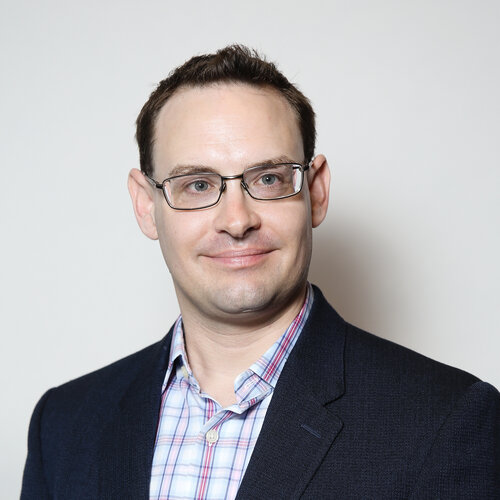Exploring Calle 16: Documenting the Latinx 16th Street Corridor and Beyond
For decades, San Francisco’s 16th Street from Guerrero all the way to South Van Ness in the Mission District has been a thriving, colorful corridor for LGBTQ Latinx people, businesses and happenings. As the city has grown more expensive and the neighborhood has undergone redevelopment, many of these businesses have closed and much of its character is in danger of eradication. A new archives collection-development initiative launching this year at the GLBT Historical Society, “Calle 16 and Beyond,” aims to enrich the society’s existing Latinx holdings by documenting the rich lives, businesses and culture of this unique queer corridor.
The project is being spearheaded by Mx. Tina Valentin Aguirre, who became the district manager of the Castro LGBTQ Cultural District last year and is leaving the GLBT Historical Society Board of Directors after six years of service, including four as board chair. We chatted with Aguirre about this exciting new project.
MS: Can you discuss what the 16th Street area meant, and means, to Latinx LGBTQ people?
TA: “Sixteenth Street” is really a metaphor for all that was, is and can be. It encompasses the people, establishments and most of all the energy that animated the area—and created a movement by and for Latinx LGBTQ people. The area was just bustling. There were many LGBTQ bars. Esta Noche was the first on 16th Street, and when it closed in 2014 it was also the last. The Eagle Creek Bar at 16th and Guerrero was owned by an African American gentleman and welcomed queer Indigenous people, Latinx and Black folks, people of color and trans and gender-nonconforming people; Las Portales, Amelia’s and Blondie’s hosted Latina lesbian club nights.
Other businesses were important too; I’m thinking of the used clothing store, Felino’s, between Valencia and Guerrero, that was special because new arrivals would find not only queens, but style-makers who were expressing and presenting themselves through unique aesthetics. Community United in Response to AIDS/SIDA (CURAS) was located at Notre Dame Plaza on Dolores and 16th. It became Proyecto Contra SIDA Por Vida at 18th and Dolores and lives on as El/La Para Trans Latinas on 16th between South Van Ness and Mission. Many establishments are gone, and I miss them terribly, though thankfully a lot of people I loved from when I first got here in the 1980s are still around.
MS: What spurred the development of this archival project?
TA: Back in 2019, I curated the exhibition Chosen Familias: LGBTQ Latinx Storiesat the GLBT Historical Society Museum, which used curated photo albums to showcase the ways that queer Latinx people have forged personal and community bonds. That exhibition was conceived as a way to bring new people and communities into the society, and this project extends the concept. We want LGBTQ Latinx community members to contribute to the archives, especially materials that people may not think of as historically valuable that might otherwise deteriorate or be discarded. At least initially, I and some collaborators from Chosen Familias will act as liaisons reaching out to community members whom we know and creating momentum. I’ve already received a few items that will be accessioned soon, including textiles, art prints and video footage—and the original videotapes Augie Robles and I used to record footage for ¡Viva 16!, our 1994documentary about how the 16th Street area mobilized to confront the AIDS epidemic during the 1980s and early 1990s.
MS: What do you hope to see accomplished with the project?
TA: Communities and chosen families allow us to build hope and resilience. This project documents this phenomenon from a historical perspective. It joins the living and the dead; those who’ve been here for decades and younger adults who are just coming to San Francisco; Latinx people who have been lost to AIDS, poverty or disease and those who are shaping the cultural conversation today. I’m hoping that future curators, researchers and community members will have access to many more holdings focused on Latinx LGBTQ people in the Bay Area. In line with the society’s new Strategic Plan, I’m especially looking forward to enriching the collections by welcoming materials that document women, transgender and gender-nonconforming people, youth and elders. It’s an explicit acknowledgement that in the past, these stories haven’t been front and center the way they should be. I can’t wait until we see ourselves reflected in the society’s holdings, and understand that the archives are a welcoming repository for our stories and experiences.
I have loved being on the society’s board, and as I leave, this project keeps me involved in the organization in a meaningful way, with the opportunity to extend the society’s reach to new people and audiences.
NOTE: To get involved with Calle 16, check this page for updates. Or contact Tina Valentin Aguirre or Director of Archives & Special Collections Kelsi Evans. To learn about the society’s existing Latinx archival holdings, see our Latinx Voices and Activism primary-source set and our Latinx research guide.

Tina Valentin Aguirre (Mx., they/them) has fundraised for organizations that focus on HIV, health, and the arts, including Mission Neighborhood Health Center, the NAMES Project Foundation, and LYRIC. Since 2020, Tina has been the district manager of the Castro LGBTQ Cultural District.

Mark Sawchuk is the communications manager at the GLBT Historical Society. He received his Ph.D. in European history at the University of California at Berkeley in 2011 and taught as a lecturer there for five years. He has worked with nonprofits in various capacities for much of his career.